Payment Processing for High-Risk Merchants: What you Need to Know in 2025

As we approach 2025, payment processing for high-risk merchants continues to evolve rapidly, especially for high-risk merchants. From increasing fraud threats to stricter regulations, the pressure on businesses operating in high-risk industries to adapt and innovate has never been greater. Staying ahead of the curve is essential to remain compliant, mitigate risk, and ensure profitability. In this blog post, we’ll explore the key trends and technologies shaping the future of high-risk merchant payment processing, focusing on AI-driven fraud detection, cryptocurrency payments, and advanced chargeback prevention tools.
Emerging Trends in Payment Processing for High-Risk Merchants
High-risk merchants who operate in industries such as online gambling, adult entertainment, tobacco, CBD, and subscription services often face unique challenges in payment processing. These businesses are more susceptible to chargebacks, fraud, and regulatory scrutiny, making it essential for them to embrace technological advancements that will secure their transactions and protect their revenue.
In 2025, several trends and innovations will dominate the payment processing industry:
1. AI-Driven Fraud Detection
Fraud detection has always been a critical concern for high-risk merchants, and as we look toward 2025, AI-driven solutions will become even more sophisticated. Fraudsters are continually developing new tactics, and traditional fraud detection methods, such as manual review and basic rule-based systems, are no longer sufficient to keep up with these evolving threats.
AI-driven fraud detection leverages machine learning algorithms that analyze vast amounts of transaction data in real time. These algorithms can identify patterns, anomalies, and suspicious behaviors that may indicate fraudulent activity. For example, AI systems can flag transactions that deviate from typical spending habits, unusual geographic locations, or abnormal purchase volumes.
Benefits of AI-Driven Fraud Detection:
- Improved accuracy: Machine learning models can detect subtle fraud indicators that human reviewers might miss.
- Real-time detection: AI can monitor and analyze transactions instantly, helping to prevent fraudulent transactions before they are processed.
- Scalability: As your business grows, AI systems can easily handle increased transaction volumes without compromising on detection accuracy.
By implementing AI-driven fraud detection systems, high-risk merchants can significantly reduce fraudulent transactions and protect their bottom line.
2. Cryptocurrency Payments
The rise of cryptocurrency has been one of the most significant developments in the world of payment processing for high-risk merchants over the last decade. By 2025, cryptocurrencies such as Bitcoin, Ethereum, and stablecoins will become increasingly popular payment options for high-risk merchants. Many high-risk industries, including online gaming and adult entertainment, have already embraced crypto due to its decentralized nature and lower risk of chargebacks.
Advantages of Cryptocurrency Payments:
- Reduced risk of chargebacks: Cryptocurrency transactions are irreversible, eliminating the risk of chargeback fraud, a common issue for high-risk merchants.
- Global accessibility: Cryptocurrencies enable businesses to accept payments from customers around the world, without the need for traditional financial institutions or high foreign exchange fees.
- Increased privacy: Many customers prefer using cryptocurrencies for online transactions due to the increased privacy and anonymity they provide.
However, accepting cryptocurrency payments also comes with its own set of challenges, such as volatility and regulatory concerns. High-risk merchants must stay informed about changes in cryptocurrency regulations and ensure they are compliant with laws related to anti-money laundering (AML) and know-your-customer (KYC) requirements.
3. Advanced Chargeback Prevention Tools
Chargebacks are one of the most significant pain points for high-risk merchants. Excessive chargebacks not only eat into profits but can also lead to higher processing fees or even the termination of a merchant account. In response to this growing problem, advanced chargeback prevention tools are evolving to help high-risk businesses manage disputes more effectively.
By 2025, chargeback prevention tools will leverage a combination of machine learning, data analytics, and automation to provide more accurate insights and faster resolution times. These tools will allow merchants to identify the root causes of chargebacks, track patterns, and proactively prevent future disputes.
Key Features of Advanced Chargeback Prevention Tools:
- Real-time chargeback alerts: Merchants receive immediate notifications when a chargeback is initiated, allowing them to respond quickly and provide evidence to dispute the claim.
- Root cause analysis: Advanced analytics can identify the most common reasons for chargebacks (e.g., friendly fraud, unauthorized transactions) and suggest strategies to reduce their occurrence.
- Automated dispute management: Automation streamlines the process of gathering evidence, submitting responses, and following up on chargebacks, saving time and reducing manual errors.
Incorporating these tools will help high-risk merchants minimize the financial impact of chargebacks and maintain their merchant accounts in good standing.
Preparing for the Future of Payment Processing for High-Risk Merchants
To remain competitive in 2025 and beyond, high-risk merchants must proactively adopt new payment technologies and strategies. Here are a few tips to help you prepare for the future:
- Embrace automation: As payment processing becomes more complex, automation will be key to staying efficient. Whether it’s automating fraud detection, chargeback management, or compliance monitoring, leveraging technology will save you time and money.
- Diversify payment options: Don’t rely solely on traditional payment methods. Embracing alternative payment methods such as cryptocurrencies, e-wallets, and mobile payments can help you reach more customers and reduce risks.
- Stay compliant: As regulations surrounding high-risk industries continue to tighten, it’s essential to stay informed about legal requirements and compliance standards. This includes AML, KYC, and PCI-DSS compliance, as well as following industry-specific rules.
Conclusion
The future of payment processing for high-risk merchants is rapidly evolving, with advancements in AI-driven fraud detection, cryptocurrency payments, and chargeback prevention tools leading the way. By adopting these innovations, high-risk merchants can protect their revenue, reduce fraud, and ensure compliance with ever-changing regulations. The businesses that stay ahead of these trends will not only survive but thrive in an increasingly competitive and complex environment.
For high-risk merchants, the key to success in 2025 is preparation. Embrace the technologies and strategies to keep your payment processing secure, efficient, and adaptable to future challenges.

